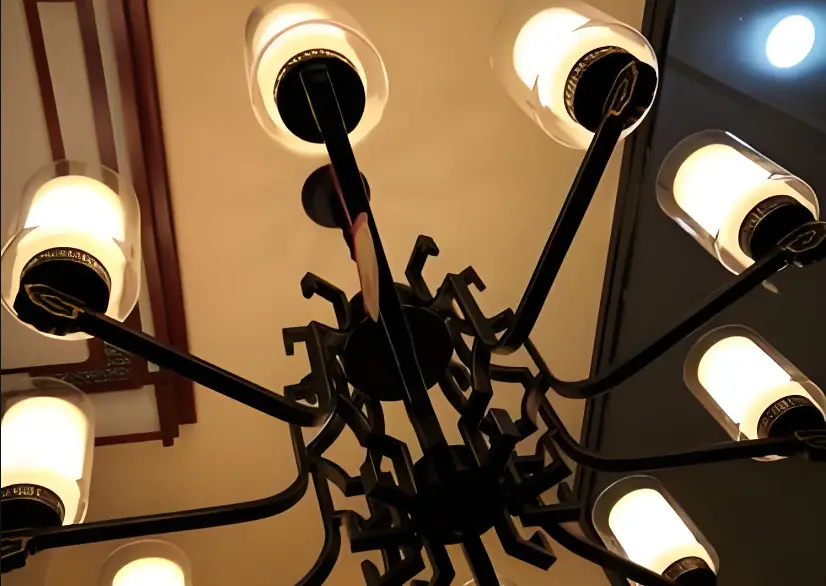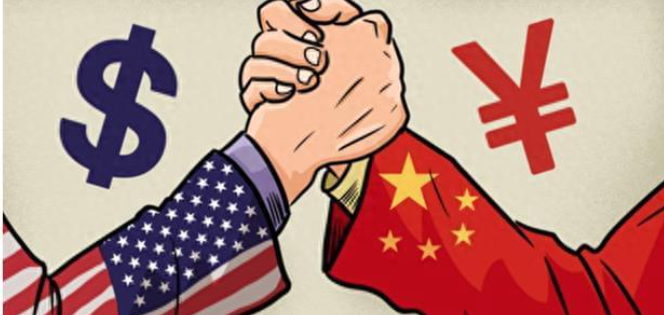Introduction: On April 10, 2025, the Sino-US trade war ushered in a historic node: the Trump administration unilaterally announced that the tariff on Chinese goods exported to the United States would soar from 104% to 125%, and it would take effect immediately. This decision not only broke the record of policy repetitions within 48 hours, but also pushed the economic and trade relations between the two countries to the critical point of "full decoupling". When the tariff exemptions for small packages below US$800 were completely cancelled at the same time, the fate of China's lighting industry was being turned by a global trade hurricane. In this seemingly "indiscriminate" tariff storm, some people saw a catastrophe, and some people saw a chance of nirvana.
On April 10, 2025, the Sino-US trade war ushered in a historic node: the Trump administration unilaterally announced that the tariff on Chinese goods exported to the United States would soar from 104% to 125%, and it would take effect immediately. This decision not only broke the record of repeated policy changes within 48 hours, but also pushed the economic and trade relations between the two countries to the critical point of "full decoupling". When the tariff exemption for small packages below $800 was completely cancelled at the same time, the fate of China's lighting industry was being turned by a global trade hurricane. In this seemingly "indiscriminate" tariff storm, some people saw a catastrophe, while others saw a chance for nirvana. China's lighting industry is standing at a historical turning point from "price competition" to "value reconstruction".
1. Speed of life and death: Who is "swimming naked" under the pressure of tariffs?
The cruel reality of "cost inversion"
On April 9, the new US tariff policy was implemented, and the export tariff on LED lamps jumped from 25% to 90%. A Zhejiang lighting company calculated an account: the ceiling lamp, which originally had a profit margin of less than 5%, now loses $2 for each exported lamp. "This is not a profit reduction, but a direct loss!" The anxiety of the head of the company reflects the collective dilemma of the industry.

The end of the "ant moving" model
The cancellation of the tariff exemption for small packages in the United States is a precise blow. In the past, small and medium-sized enterprises that relied on cross-border e-commerce to export "in parts" have now seen tariffs for single packages soar from $25 to $150. A Shenzhen lighting e-commerce manager said frankly: "We used to rely on low prices to increase sales, but now we can't even cover the logistics costs." Data shows that in the first quarter of this year, China's exports of lighting products to the United States fell 27% year-on-year, and more than 300 small and micro enterprises have suspended orders.
Industry reshuffle accelerates
The fate of leading companies and small and medium-sized players is becoming clearer. A listed lighting company relies on overseas warehouses to prepare 30 days of inventory in advance, and maintains a stable supply chain with "fast ship + small batch replenishment"; while a company in Dongguan with an annual revenue of 50 million yuan was forced to lay off 50% of its employees due to a broken capital chain. "This is not competition, it's a clearance." The long-term cooperative industry analyst of China Lighting Network said bluntly.
2. Breakout path: from "cutting off one's wrist to survive" to "changing lanes to overtake"
Short-term game: extreme maneuvering of the supply chain
"Tariff costs must be passed on, but strategy is required." The supply chain director of a leading enterprise revealed to us that it has controlled the order loss rate to less than 15% by adjusting prices in stages (up 5%-8% per month), switching to Mexican transit warehouses, and sharing tariffs with US customers in proportion. This "dancing with shackles" strategy may become a textbook for industry survival.

Long-term breakthrough: the double dividend of RCEP and branding
As the US market shrinks, Southeast Asia is becoming a new battlefield. Under the RCEP framework, Vietnam and Thailand's lighting import tariffs have dropped to below 5%. A Foshan lighting manufacturer has reduced supply chain costs by 18% with the help of local assembly plants, and its exports to ASEAN have surged by 40% in 2023. At the same time, high-end brands began to reap the technology premium: a Shenzhen company relied on intelligent dimming technology to push the unit price of lamps from US$15 to US$45, and the profit margin exceeded the pre-tariff level.
Hidden competition: Digitalization reconstructs the logic of survival
A Zhejiang company predicted changes in US customs policies through big data and adjusted the production line three months in advance; a factory in Guangdong introduced an AI quality inspection system, reducing the return rate from 8% to 1.5%, and forcibly carved out profit space from the cost quagmire. "The companies that can survive in the future must have "digital genes" deeply rooted in their bones." Industry think tank experts asserted.
III. Future vision: China's answer to the global lighting industry
Trend 1: The "de-Americanization" of the manufacturing chain is irreversible
The US market share has dropped from 35% at its peak to 22% in 2024, but China's lighting production capacity has not shrunk-Middle East e-commerce orders have soared by 300%, and the annual growth rate of the Latin American market has exceeded 25%. The global industrial chain is shifting from "single-pole dependence" to "multi-point blossoming".
Trend 2: From "Made in China" to "China Solution"
In Egypt, Chinese photovoltaic street lamps light up desert roads; in Brazil, smart home lighting systems are labeled "Huawei Cooperation Ecosystem". Industry leaders no longer simply export products, but instead export "light environment solutions", raising gross profit margins to more than 40%.
Trend 3: The ultimate game between policy and market
"The tariff stick cannot defeat real competitiveness." Relevant scholars who have participated in WTO negotiations pointed out that if the Chinese lighting industry can establish standard discourse power in the fields of green energy saving (such as the EU's new energy efficiency label) and smart IoT, it may force the US market to reopen its doors.

